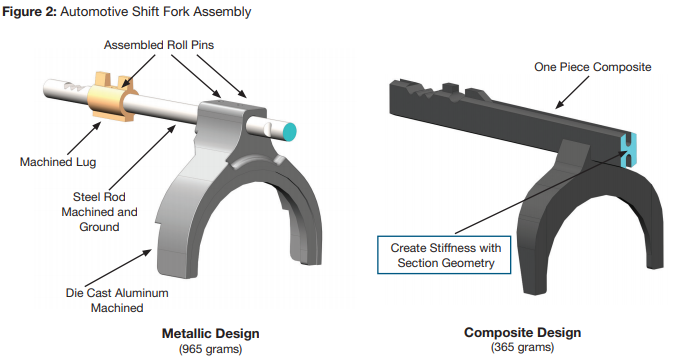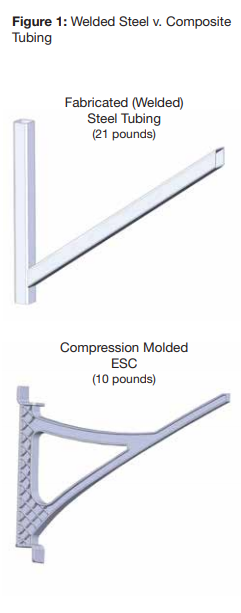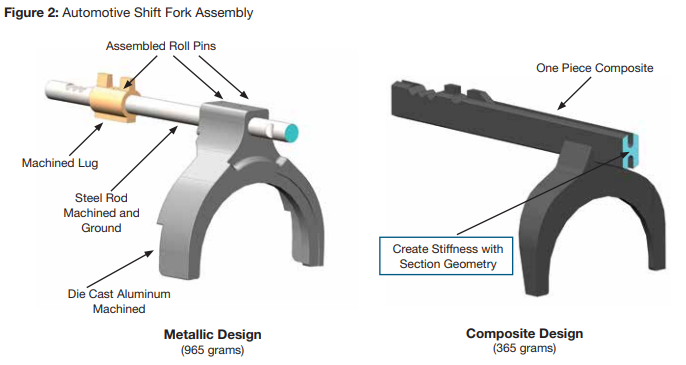When designing with composites, a key question must be addressed up front: Why composites? The answer to this question is likely to determine the direction taken to optimize the design while leveraging the benefits of composites.
Cost, weight, performance, part count and complexity are generally the key drivers for a part design, but these can conflict with each other. For example, if lighter weight is the answer to the question “why composites?” the part may require a different design approach than if lower cost or higher performance is the answer. It can sometimes be very difficult to get lighter weight, lower cost and equal or better performance all at the same time. Often, the priority of the design drivers will determine the optimum design.
In Figure 1, the tubing was redesigned using composites by adding a tie between the uprights and a complex rib structure to meet the required performance. This resulted in a significant weight savings, but a cost reduction could not be realized compared to the original simple steel-welded component.
One design approach to reduce system cost is parts consolidation, with savings realized through inventory reduction and faster assembly. The designer should consider combining parts into a monolithic design, incorporating mating parts and eliminating fasteners and joining operations. Figure 2 illustrates this concept by molding one part to replace three machined and assembled parts.
It is particularly important for composite engineers to know and prioritize requirements they are designing to. To really take advantage of composite materials, understanding how the part will be used – including the loads, attachment points, any dimensional constraints, mating parts and the environment in which the material will be used – is a critical first step. It’s important to understand that a functional composite design may not look like the original metallic design.
A common mistake designers make when replacing metals with composite parts is trying to make them look the same. This approach is not likely to capitalize on the benefits of composite material. The metallic design was likely modeled with isotropic properties (equal properties in all directions) or perhaps not modeled at all and just over designed to function. Most composite materials have anisotropic properties (different properties in different directions) and should be modeled using those properties. Different forms of composites have different levels of anisotropy.
The level of anisotropy is related to the materials and the manufacturing process: Hand lay-up/vacuum bag/autoclave, spray-up, RTM, compression/injection molding, filament winding, pultrusion and other composite fabrication processes all have different anisotropy and thereby need different design approaches. Modeling composites using isotropic properties can be acceptable in some situations when the level of anisotropy is closer to isotropic. Composite molding compounds would be one example of using isotropic properties. However, this should be used as a high-level first look and not a qualifying analysis.




